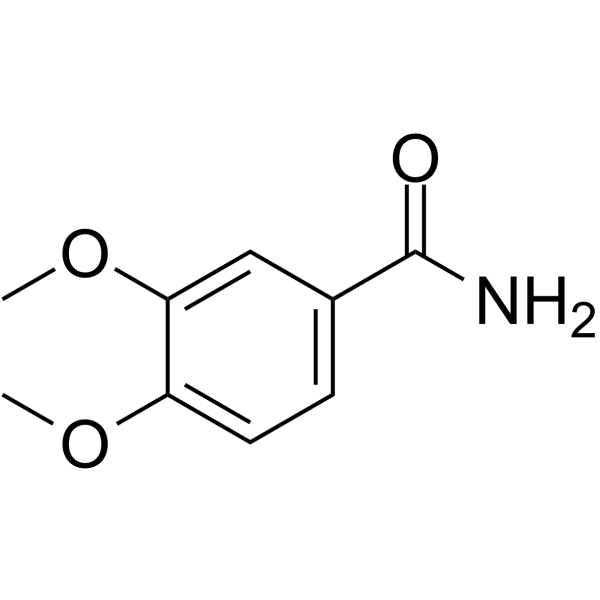
3,4-Dimethoxybenzamide
CAS No. 1521-41-1
3,4-Dimethoxybenzamide( —— )
Catalog No. M28208 CAS No. 1521-41-1
3,4-Dimethoxybenzamide, amide, is isolated from the solid culture of Streptoverticillium morookaense. 3,4-Dimethoxybenzamide can be used as the starting material to preparation Itopride hydrochloride.
Purity : >98% (HPLC)
 COA
COA
 Datasheet
Datasheet
 HNMR
HNMR
 HPLC
HPLC
 MSDS
MSDS
 Handing Instructions
Handing Instructions
| Size | Price / USD | Stock | Quantity |
| 50MG | 45 | In Stock |


|
| 100MG | 68 | In Stock |


|
| 200MG | Get Quote | In Stock |


|
| 500MG | Get Quote | In Stock |


|
| 1G | Get Quote | In Stock |


|
Biological Information
-
Product Name3,4-Dimethoxybenzamide
-
NoteResearch use only, not for human use.
-
Brief Description3,4-Dimethoxybenzamide, amide, is isolated from the solid culture of Streptoverticillium morookaense. 3,4-Dimethoxybenzamide can be used as the starting material to preparation Itopride hydrochloride.
-
Description3,4-Dimethoxybenzamide, amide, is isolated from the solid culture of Streptoverticillium morookaense . 3,4-Dimethoxybenzamide can be used as the starting material to preparation Itopride hydrochloride.
-
In Vitro——
-
In Vivo——
-
Synonyms——
-
PathwayOthers
-
TargetOther Targets
-
Recptorurotensin-II (UT)
-
Research Area——
-
Indication——
Chemical Information
-
CAS Number1521-41-1
-
Formula Weight181.191
-
Molecular FormulaC9H11NO3
-
Purity>98% (HPLC)
-
Solubility——
-
SMILESCOc1ccc(cc1OC)C(N)=O
-
Chemical Name——
Shipping & Storage Information
-
Storage(-20℃)
-
ShippingWith Ice Pack
-
Stability≥ 2 years
Reference
1.Cosenzi A. Non peptidic urotensin II antagonists: perspectives for a new class of drugs. Cardiovasc Hematol Agents Med Chem. 2008 Apr;6(2):80-91.
molnova catalog



related products
-
HCGRP-(8-37)
Rat CGRP-(8-37) (VTHRLAGLLSRSGGVVKDNFVPTNVGSEAF) is a highly selective CGRP receptor antagonist
-
Gastrodenol
Gastrodenol?is a medicine available in a number of countries worldwide. It is is a mineral that is used in treating ulcers and upset stomach.
-
Acetovanillone
Apocynin is a specific NADPH-oxidase inhibitor (IC50: 10 μM).



 Cart
Cart
 sales@molnova.com
sales@molnova.com


